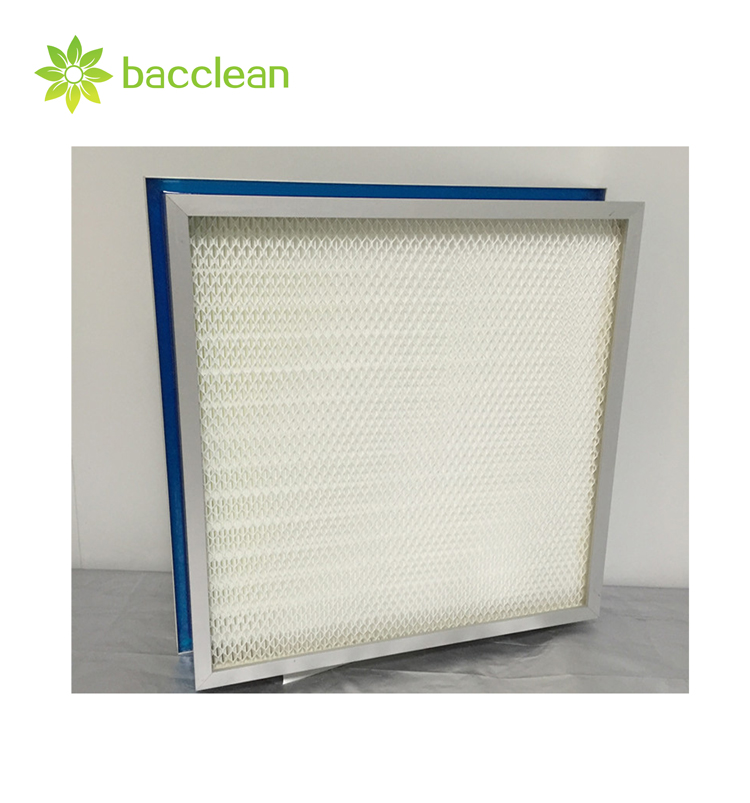gel seal filter applications and efficiencies
gel seal filter applications and efficienciesgel seal HEPA filters are single layer gel seal HEPA filters and double-layer gel seal HEPA filters.
 The gel seal type is a kind of high-efficiency filter, the main use is widely used in pharmaceutical, clean room end high-efficiency air supply, laminar flow hood, hospital, food hygiene, microbiology, and other advanced sealed space purification end, clean equipment, and other installation forms, widely used in the pharmaceutical industry.
The outer frame is available in aluminum alloy. Aluminum alloy frame thickness can be made into 69MM, 90MM, 93MM. Description of filter material: ultra-fine glass fiber filter paper. Sealant parameters: jelly glue. Separator: hot melt adhesive. Protective mesh: steel mesh sprayed with plastic, white. Operating temperature: ≤ 70°C Efficiency: 99.97%, 99.99%, 99.999%. Introduction to the DOP test method for gel seal HEPA filters: The test dust source is 0.3mm monodisperse phase DOP (plasticizer commonly used in the plastics industry) droplets.
The "amount" is the degree of turbidity of the air containing DOP. The dust is measured with a photometer,
The difference in turbidity of the air sample is used to determine the efficiency of the filter in filtering DOP particles. The gel seal HEPA filter heats the DOP liquid into a vapor, which condenses into tiny droplets under certain conditions, leaving particles of around 0.3mm after removing the oversized and undersized droplets, and the foggy DOP enters the duct.
The turbidity of the gas sample before and after the filter is measured and the filter's efficiency in filtering 0.3mm dust is determined from this. The DOP method for liquid tank-sealed HEPA filters has been around for over 50 years and this method used to be the more common method used internationally to measure HEPA filters. In the early days, it was thought that filters were most difficult to filter dust of 0.3mm, so it was specified that 0.3mm dust was used to measure HEPA filters. The benzene ring in DOP was suspected of causing cancer, so many laboratories switched to alternatives with similar properties but without the benzene ring, such as DOS, but the test method is still called the "DOP method". |

 German
German French
French Italian
Italian Portuguese
Portuguese Japanese
Japanese Korrean
Korrean Russian
Russian




